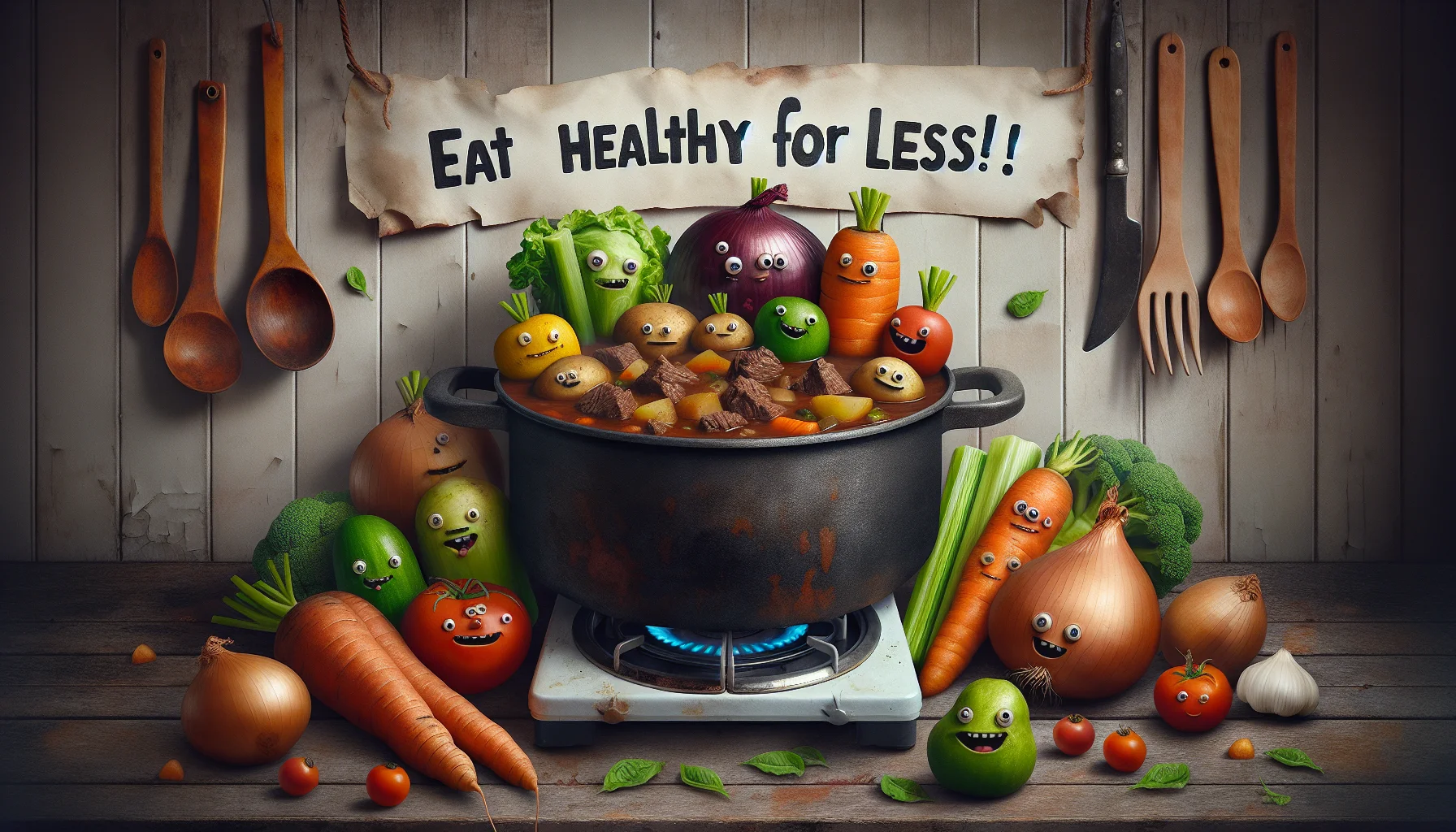Beef stew recipe without wine Quiz
Test Your Knowledge
Question of
Healthy Beef Stew Recipe Without Wine
Opting for a beef stew recipe without wine is a step towards a healthier meal choice for several reasons. Firstly, eliminating wine from the recipe reduces the overall calorie count, making it a more suitable option for those monitoring their calorie intake. Additionally, avoiding wine in the recipe can be beneficial for individuals who are abstaining from alcohol for health, dietary, or personal reasons. By choosing a beef stew without wine, you can still enjoy a rich, flavorful meal that is both nutritious and comforting, without compromising on your health goals or dietary preferences.
Ingredients for a Healthy Beef Stew
- 2 pounds of beef chuck, cut into 1-inch cubes
- 2 tablespoons of olive oil
- 4 cups of beef broth
- 1 cup of water
- 3 carrots, peeled and sliced into 1/4-inch pieces
- 3 potatoes, peeled and cut into 1-inch cubes
- 1 onion, finely chopped
- 2 stalks of celery, sliced
- 1 teaspoon of salt
- 1/2 teaspoon of black pepper
- 2 cloves of garlic, minced
- 1 teaspoon of dried thyme
- 1 bay leaf
- 2 tablespoons of tomato paste
- 1 cup of frozen peas, thawed
Step-by-Step Cooking Instructions
Follow these simple steps to prepare a hearty and delicious beef stew without the need for wine. This recipe focuses on using simple ingredients to bring out the rich flavors of the beef and vegetables, making it perfect for a comforting meal any day of the week.
- Start by cutting 2 pounds of beef chuck into 1-inch cubes.
- Season the beef cubes generously with salt and pepper.
- In a large pot, heat 2 tablespoons of vegetable oil over medium-high heat. Add the beef cubes and sear them until all sides are brown, doing this in batches if necessary to avoid overcrowding the pot.
- Remove the beef from the pot and set aside. In the same pot, add 1 diced onion, 2 sliced carrots, and 2 sliced celery stalks. Sauté until the vegetables are slightly softened.
- Add 2 minced garlic cloves to the pot and cook for another minute until fragrant.
- Return the beef to the pot and add 4 cups of beef broth, ensuring that the beef is fully submerged.
- Add 2 tablespoons of tomato paste, 1 teaspoon of dried thyme, 1 bay leaf, and any additional salt and pepper to taste. Stir well to combine.
- Bring the stew to a boil, then reduce the heat to low. Cover and simmer for about 1.5 to 2 hours, or until the beef is tender.
- About 30 minutes before the stew is done, add 2 diced potatoes and continue to simmer until the potatoes are tender.
- Remove the bay leaf and adjust seasoning with salt and pepper if necessary.
- Optionally, you can thicken the stew by mixing 2 tablespoons of cornstarch with 2 tablespoons of water and stirring this mixture into the stew. Cook for another 5 minutes until the stew has thickened.
Nutritional Benefits of Our Beef Stew
Our beef stew recipe, crafted without the inclusion of wine, offers a multitude of health benefits, making it not only a delicious meal but also a nourishing choice for your diet. The stew is packed with high-quality protein from beef, which is essential for muscle repair and growth. Beef also provides vital nutrients such as iron, which helps in preventing anemia, and zinc, which boosts the immune system. We incorporate a variety of vegetables like carrots, potatoes, and peas, each contributing valuable vitamins and minerals. Carrots are rich in beta-carotene, which is converted into vitamin A in the body, supporting good vision and immune function. Potatoes add dietary fiber to the meal, promoting healthy digestion and sustained energy levels. Peas are a great source of vitamin K, which plays a crucial role in bone health. Together, these ingredients create a hearty, healthful stew that satisfies the palate while contributing to a balanced diet.
Tips for Making Your Beef Stew Healthier
- Use lean cuts of beef to reduce saturated fat content.
- Increase the amount of vegetables like carrots, celery, and onions for added fiber and nutrients.
- Consider adding legumes such as lentils or chickpeas for extra protein and texture.
- Replace traditional thickening agents with pureed vegetables for a healthier thickener.
- Use low-sodium beef broth or make your own to control the amount of salt.
- Include a variety of herbs and spices to enhance flavor without adding extra fat or calories.
- Opt for whole grain bread or a side of brown rice instead of white bread to increase fiber intake.
- Limit the addition of oil by sautéing vegetables in a small amount of broth instead.
- Skim off any fat that rises to the top during cooking to reduce fat content.
- Add leafy greens like spinach or kale at the end of cooking for a nutrient boost.
Serving Suggestions for Beef Stew
Beef stew is a hearty and comforting dish that pairs wonderfully with a variety of healthy sides and accompaniments. For a nutritious and balanced meal, consider serving your beef stew with a side of steamed green beans or roasted Brussels sprouts, which add a delightful crunch and a dose of greens to your plate. A warm, crusty whole-grain bread can be perfect for soaking up the stew's flavorful broth, offering a satisfying texture and additional fiber. For a lighter option, a mixed green salad with a vinaigrette dressing can provide a fresh contrast to the richness of the stew. Lastly, serving the stew atop a bed of fluffy quinoa or brown rice can round out the meal with wholesome grains, making for a fulfilling and health-conscious dining experience.
Storing and Reheating Tips
- Allow the beef stew to cool to room temperature before storing it to prevent bacterial growth.
- Transfer the stew into airtight containers and refrigerate within two hours of cooking to keep it fresh.
- Consume refrigerated beef stew within 3 to 4 days for the best quality and safety.
- For longer storage, freeze the stew in airtight containers or heavy-duty freezer bags. It can last up to 3 months.
- Label the containers with the date to keep track of storage time.
- Thaw frozen beef stew in the refrigerator overnight before reheating.
- Reheat the stew over low to medium heat on the stove, stirring occasionally to ensure even heating.
- If using a microwave, cover the stew and stir it several times during reheating to distribute the heat evenly.
- Avoid reheating the stew multiple times to prevent loss of flavor and potential food safety issues.
- Ensure the stew reaches an internal temperature of 165°F (74°C) when reheating for safe consumption.












